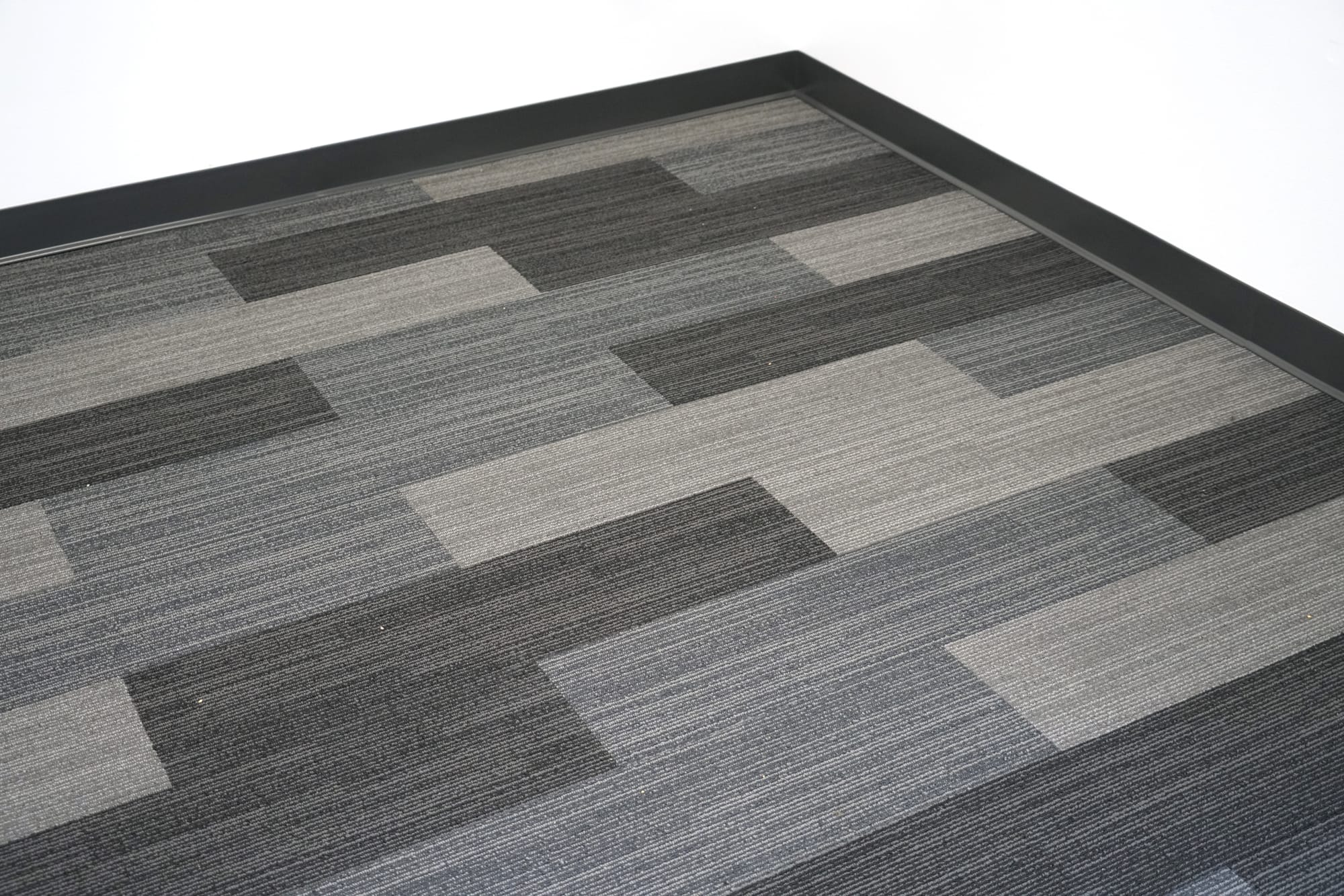How to Remove Paint from Carpet and Fabric

Key Features
- Versatile Cleaning Techniques: Learn how to tackle both wet and dried paint stains on carpets and fabrics with simple household items.
- Step-by-Step Guide for Different Paint Types: Whether it's water-based or oil-based, the guide covers tailored methods for effective stain removal.
- Practical Tips for DIYers: From prevention to quick fixes, these methods are designed to save your carpets and upholstery from paint accidents.
A Step-by-Step Guide to Removing Paint From Carpet
We've all been there—whether you're painting a room or working on a creative project, somehow a bit of paint manages to find its way onto the carpet or your favorite chair. Don’t panic! With a bit of patience and the right approach, you can remove paint from carpet and fabric without leaving a lasting stain. Here’s how to tackle this common issue, especially for those in Portland dealing with high humidity and variable weather that can affect paint removal.
Can You Remove Paint from Carpet and Fabric?
Yes, you can! Whether it’s fresh or dried paint, the key is to act quickly and use the right cleaning agents. Different types of paint require slightly different methods, so identifying the type of paint is the first step in successfully removing it.
What Type of Paint Are You Dealing With?
Before diving in, you’ll need to figure out if the paint is water-based (latex or acrylic) or oil-based. Here’s how to tell:
- Water-Based Paint: If the label says latex or acrylic, it’s water-based. These paints are easier to remove, especially if they’re still wet.
- Oil-Based Paint: If the paint is labeled “alkyd” or “oil-based,” it’ll require a different, more involved approach.
Things to Know
- Different Paint Types Require Different Approaches: Water-based paints are generally easier to remove than oil-based paints, especially if still wet.
- Blot, Don’t Rub: Rubbing can push the paint deeper into the fibers. Always blot gently to lift the stain.
- Test Solvents First: Whether using rubbing alcohol or mineral spirits, always test on a hidden area first to avoid damaging the fabric.
- Speed is Essential for Wet Paint: The faster you act, the better the chance of completely removing the paint without a trace.
- Prevention is Key: Use drop cloths and painter’s tape to avoid paint spills in the first place, especially on carpets and upholstery.
Removing Wet Paint from Carpet and Fabric
Fresh paint spills are far easier to handle, so if the paint is still wet, here’s what to do:
- Blot, Don’t Rub: Use a clean, dry cloth or paper towel to blot as much paint as possible. Avoid rubbing, as this can push the paint further into the carpet or fabric fibers.
- Dampen with Water: For water-based paints, dampen a cloth with a little warm water and gently blot the stain.
- Use Mild Soap: Mix a small amount of mild dish soap with water, then blot the paint gently with a sponge or cloth. Continue until the stain begins to lift.
- Repeat: Depending on how much paint there is, you may need to repeat the blotting and cleaning a few times.
Pro Tip: When working on carpets, always work from the outside of the stain toward the center to prevent it from spreading.
How to Remove Dried Paint from Carpet and Fabric
Dried paint is a bit more challenging to remove, but it’s possible with the right tools and patience. Here’s a breakdown for both water-based and oil-based paint.
Removing Dried Water-Based Paint
- Scrape Off Excess Paint: Use a plastic scraper or a dull knife to gently scrape away any dried paint. Be careful not to damage the fibers.
- Dampen with Warm, Soapy Water: Apply a mixture of warm water and dish soap to the stained area using a cloth. Let it sit for a few minutes to loosen the paint.
- Use a Stiff Brush: Gently brush the area to lift the paint particles. Blot with a clean cloth to remove the loosened paint.
- Apply Rubbing Alcohol: If the paint persists, try blotting the area with a cloth dampened with rubbing alcohol (test in an inconspicuous area first). Alcohol can help break down the paint particles.
- Rinse and Blot: After you’ve removed as much paint as possible, rinse with clean water and blot until the carpet or fabric is no longer soapy.
In Our Experience
"In our experience, acting quickly is the key to removing paint from carpet and fabric successfully. While fresh spills are much easier to handle, even dried paint stains can be tackled with the right approach. Having a few common household items like rubbing alcohol and mild soap on hand can make all the difference. The most important thing is to avoid rubbing the stain, as it can cause more damage than good. Instead, focus on blotting and using the right cleaning agents for the paint type."
Removing Dried Oil-Based Paint
For oil-based paints, you’ll need a solvent, as soap and water alone won’t do the trick. Here’s the best approach:
- Scrape Off Excess Paint: Start by carefully scraping off as much dried paint as possible.
- Apply Paint Thinner or Mineral Spirits: Dampen a cloth with paint thinner or mineral spirits (again, test a small area first) and blot the stain. Avoid over-wetting the fabric, as this could damage it.
- Blot with a Clean Cloth: After applying the solvent, blot with a dry cloth to lift the paint. Repeat until the paint begins to come up.
- Rinse with Soap and Water: Once most of the paint is removed, rinse the area with soapy water and blot dry.
Pro Tip: Open windows and ensure proper ventilation when using solvents, especially in small spaces.
Removing Paint from Upholstered Furniture
Paint spills on upholstered furniture can feel disastrous, but with a few careful steps, you can salvage your upholstery. The process is similar to removing paint from fabric:
- Blot with a Dry Cloth: For wet paint, blot up as much as possible before it dries.
- Apply Soapy Water or Rubbing Alcohol: For water-based paints, use a bit of soapy water. For oil-based paints, try a little rubbing alcohol or mineral spirits.
- Blot and Repeat: Continue blotting and reapplying as needed until the paint lifts.
- Use a Gentle Brush: If any dried paint remains, gently brush the area, then blot with a damp cloth.
Pro Tip: Keep a small, portable fan nearby when working on furniture to help dry the area more quickly after cleaning.
A Quick Reference Table for Paint Removal
| Type of Paint | Removal Method | Tools Needed |
|---|---|---|
| Wet Water-Based Paint | Blot with soapy water | Cloth, mild soap, water |
| Wet Oil-Based Paint | Blot with paint thinner or mineral spirits | Cloth, paint thinner |
| Dried Water-Based Paint | Scrape, then use warm, soapy water, rubbing alcohol | Plastic scraper, brush, alcohol |
| Dried Oil-Based Paint | Scrape, then blot with mineral spirits | Plastic scraper, mineral spirits |
What If the Paint Won’t Come Out?
If you’ve tried everything and the paint still won’t budge, there are a few options left:
- Professional Carpet Cleaner: For stubborn stains, hiring a professional carpet cleaner might be the best option. They have specialized equipment and solvents that are highly effective.
- Steam Cleaning: If the fabric can handle heat, a steam cleaner can loosen dried paint and make it easier to blot out.
- Enzyme Cleaners: Some enzyme-based cleaners are effective on certain types of stains, though results may vary based on paint type.
Preventing Paint Spills in the Future
Prevention is always better than cure! Here are a few tips to keep your carpet and fabric paint-free next time you’re painting or working on a project:
- Use Drop Cloths: Cover floors, furniture, and anything else in the room with drop cloths.
- Mask Off Edges: For smaller projects, use painter’s tape to mask off edges where spills might occur.
- Keep Solvents on Hand: When painting, keep a small bottle of solvent and cloth nearby to quickly blot any accidental spills.
Final Thoughts
Removing paint from carpet and fabric can be tricky, but with patience and the right materials, it’s entirely possible to get your surfaces looking clean and fresh again. Valspar, Behr, and other popular brands make high-quality paint, but regardless of the brand, accidents happen. By acting quickly and using these tried-and-true methods, you’ll have your carpets and fabrics back to their original state in no time.
Do You Have Questions? Give Us A Call With Any & All! 503-389-5758
-
People Also Ask:
How do you get dried paint out of carpet?
For dried water-based paint, use a combination of scraping, warm soapy water, and rubbing alcohol. For dried oil-based paint, apply mineral spirits after scraping.
What is the best way to remove wet paint from carpet?
Blot the wet paint with a clean cloth, then apply a mixture of water and mild soap. Avoid rubbing to prevent the paint from spreading deeper into the fibers.
Can rubbing alcohol remove paint from fabric?
Yes, rubbing alcohol can be effective on dried water-based paint. Always test a small, hidden area first to ensure it doesn't damage the fabric.
-
Subscribe to Our Blog & Elevate Your DIY Game! Never miss a beat! Join the Lightmen Painting community and get the latest insights on painting, DIY projects, and expert tips delivered straight to your inbox.
Have something specific in mind? We’d love to hear your ideas! Let us know what topics or projects you’re curious about—your input shapes our next posts.
Subscribe now and let’s transform your spaces together!
Get $3000 in personal assistant credits from Magic .com
^ Click Our Logo Above To Redeem ^
If your in the Portland, Or. area and need advice or a free no obligation estimate call us at 503-389-5758 or email scheduling@lightmenpainting.com
Shout Out:
MoneyControl - Tracking the Paint Industry’s Market Trends
For those keeping an eye on the financial health of major paint companies, MoneyControl provides a comprehensive market overview. At Lightmen Painting, we value insights into industry trends to stay ahead and provide the best for our clients. Check out their updates to make informed decisions on your next project. Dive into market insights at MoneyControl.
Thanks for stopping by Lightmen Daily! Stay tuned for more practical tips and expert advice on making your painting projects flawless, from wall to floor!
Definitions
- Water-Based Paint: Paints like latex and acrylic that can be cleaned with water and mild soap, especially when still wet.
- Oil-Based Paint: More durable paint that requires solvents like mineral spirits for removal, especially once dried.
- Blotting: A technique of gently pressing a cloth onto a stain to absorb the paint without spreading it.
- Rubbing Alcohol: A solvent that can help break down dried water-based paint stains.
- Mineral Spirits: A solvent used to remove oil-based paints from surfaces without damaging them.
- Scraping Tool: A plastic scraper or dull knife used to gently lift dried paint from carpets or fabric without tearing fibers.
- Upholstery: Fabric-covered furniture that can be vulnerable to paint spills but can often be salvaged with careful cleaning.
- Drop Cloth: Protective covering used to prevent paint spills on carpets and floors during painting projects.
- Steam Cleaning: A method that uses heat and moisture to loosen stubborn stains, including dried paint.
- Enzyme Cleaner: A type of cleaner that uses natural enzymes to break down organic stains and can be effective on certain types of paint.
Lightmen Painting Serving: Portland, Tigard, Lake Oswego, Tualatin, West Linn, Milwaukie, Sherwood, Happy Valley, Oregon City, Beaverton, Hillsboro, Gresham -Trade Partners-

